5 Ways to Save Your Child’s Life
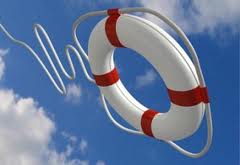 This article is a guide for what you need to know to save your child’s life when it comes to water.
This article is a guide for what you need to know to save your child’s life when it comes to water.
So, if you want to know what you can do to prevent accident or injury around water, you are in the right place. Keep reading…
According to the CDC (Center for Disease Control), drowning is the second leading cause of unintentional injury deaths in children under 14 in the U.S. and drowning is the leading cause of injury death for those 1 to 4 years of age (excluding birth defects).
The WHO (World Health Organization) states, “Drowning is the 3rd leading cause of unintentional injury death worldwide.”
That’s a big deal! (And we’ve noticed the first few weeks of summer is when the majority of drownings occur!)
The good news is it is totally preventable. Our goal at The Swim Academy, is to teach children how to be safe in the water as quickly and efficiently as possible. We’d love to support you in doing the same.
Besides learning from groups like the ILS (International Life Saving Federation), doing the obvious like keeping an eye on children in and around water, and locking up access to swimming pools and large bodies of water etc., here are some things you can do to help save your child’s life. This certainly isn’t all inclusive, but it is a great start!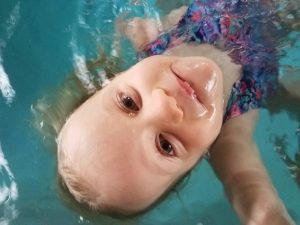
- Make bath time fun.
- Teach your child to blow bubbles.
- Teach your child to float on their back.
- Enjoy the pool together.
- Take swimming lessons.
We’re not going to go into a lot of depth here because we have articles on each of these topics. But here are some brief summaries to get you started.
Make Bath Time Fun
Safety
Safety is a key foundation to making this special time with your child fun! If they feel safe (age appropriate safety), they are more likely to explore, learn and progress. However, there is a fine line between being too protective and not protective enough. Don’t ever leave a child alone in the bathtub. A child can drown in 2 inches of water or less. But they also need room to explore, even if that includes getting their face wet a bit on accident.
After safety is in place, make sure the water and air temperature is warm throughout the entire bath experience.
Now you are ready for the fun! Weather they are exploring on their own, playing a game guided by you, or working on a swimming skill, it will
transform the regular task of cleaning the body into an imaginative fun experience.
Tools
Some tools that help make bath time fun include glow sticks (bath time in the dark!), bubbles, food coloring, containers, floating and sinking toys, a mirror, etc. Maybe some of these toys will activate your own imagination and you can come up with fun things to do with them.
Games and Activities
Young children love playing games and using their imagination. Total understatement! Playing games is a way to teach and help those with fears relax or overcome challenges. We’ve mentioned two of our favorite games below: “Painting” and “Body Parts”.
Painting: With food coloring in containers (or just one color in the tub) your child can “paint” his or her face or body. This gives kids the control of putting water on themselves. Just make sure to encourage them to paint their face!
Body Parts: Call out a body part and they have to submerge that body part in the water. After some body parts from the neck down, try chin, cheeks, forehead, ears, back of head, top of head.
Songs
Songs are always welcomed! Turn “Wheels on the Bus” to “Kids in the Tub” and make up new actions that support being in the water and your child’s skill level. Here is another one of our favorites:
I’m a little pancake, short and flat.
Flip me over onto my back. (Work up to ears in on back if possible.)
I’m a little pancake, small and yummy.
Flip me over onto my tummy. (Work up to blowing bubbles or bubbles with face in.)
Skills Practice
Most children feel safer with you at home in their bath tub than they will in a large swimming pool. Practicing skills with your child during this fun time you’ve created will help them learn and progress. Straight legs kicking, blowing mouth bubbles and nose bubbles, bubbles with face in, and back floats are just a few of the skills to focus on.
Turn bath time into something your little ones look forward to! Here is another great resource to make bathtime fun.
Teach Your Child to Blow Bubbles
Blowing bubbles is one of the first skills we want children to learn during their swimming lesson because it helps them with breath control. Breath control is foundational to swimming! Teaching a child to blow bubbles is a skill you can easily do at home during bath time. Depending on the age of the child, you can start with the step that feels most appropriate.
- Teach blowing air with pursed lips. These two videos (here and here) have some fun ways to do that. This will also make bath time even more fun. Making the lips as small as possible and blowing air out into the air or against a hand is the first step. When a child can watch you do this and then feel you do it against their face or hand, they will start to learn what you want them to do.>
- Blow the water. You don’t even have to touch the water yet. Just show your child that their blow will make the water move.
- Kiss the water. With the blow skill they are learning in #1 and #2, have your child go down and kiss the water with their blow.
- Blow bubbles with lips in the water.
- Learn to hum outside of bath time.
- Hum with bubbles in the water.
- Nose bubbles. (Basically the same thing as #6.)
- Eyes/forehead in with bubbles! Sometimes using the word forehead, eyes, or goggles instead of face is less scary to a young child. See what works best for your kiddo.
- Next, increase the amount of time they can blow bubbles. You can make this a game, count out loud, or put your hands in the water so they can see your fingers as you count.
Teach Your Child to Float on Their Back
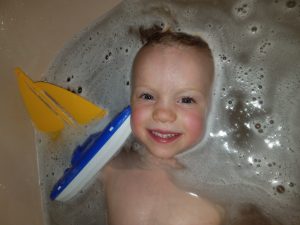
Floating on the back is one of the second most important skills we want children to learn. This can be done many different ways at home in the bathtub. But, please remember that this is to support a child in learning the back float in a swimming pool. If they can do it in the bathtub, it doesn’t mean they can do it in the swimming pool. But getting them on their back, with ears in and relaxing comfortably is your goal.
Here are some ideas that might get you started:
Gradual Increase
Change the level of the water with more or less until they are comfortable putting their head down on the bottom of the bathtub (without their face in the water). This might mean that there is only 2 inches of water in the tub. Then slowly add more water over time (weeks or months) until they are comfortable with ears in.
Right ear, left ear.
Asking them to put one ear in the water by tipping their head to the side is a fun game for some kids and keeps them in control. The more a child feels in control of their water experience, the more they will be eager to do more over time.
Pancake
See the Pancake song in Make Bath Time Fun.
Supporting Hands
In deeper water, kneel down and reach over the bathtub so you can support their back and head. Holding their sacrum and the base of their head is best, but sometimes a stretched out hand on the back feels better to a child who is more nervous and hesitant.
Spider Fingers
While doing “Supporting Hands” you can add spider fingers that move up and down the child’s back giving slightly less and less support as they become more and more comfortable.
Enjoy the Pool Together
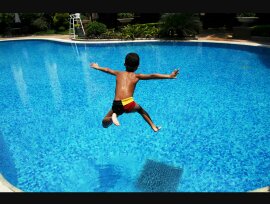 Going to the pool as a family and letting children explore the water world (supervised, but on their own) is one of the most powerful ways for kids to get a feel for the water while feeling in control of their world.
Going to the pool as a family and letting children explore the water world (supervised, but on their own) is one of the most powerful ways for kids to get a feel for the water while feeling in control of their world.
As they explore more and more, they will naturally learn skills that will support them in learning how to swim. Some of these include natural breath control, sculling, physical strength, courage, and a healthy fear of water, which we consider a skill that supports learning how to swim.
Remember, don’t rescue your child from the water! They need to learn cause and effect. Especially while they are in control of their world. It is also good for their heads to slip under for a moment. Age and they child’s personality determines the length of time you allow them to be under the water.
Please rescue them when they are in trouble so they don’t develop a fear of the water. If you have a child who already has a fear of water, try taking baby steps to get them to explore a little on their own and to the level they are comfortable.
Take Swimming Lessons!
Getting your child enrolled into swimming lessons (or teaching your child to swim on your own) is another thing you can do to save your child’s life. Knowing how to swim is a skill that will serve them for a lifetime. Finding the right location and teacher may take time, but it will be well worth the time and money spent.
After that, it’s just practice and repetition and being smart around water. Hopefully, some of these tips will support you in getting your child water safe. Please let us know if we can answer any questions or support you in any way!
Until next time, stay water smart and water safe!
Jamie Hubbard
The Swim Academy
Private and Semi-Private Swimming Lessons

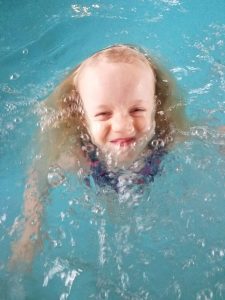 If you want to learn how to teach your child to blow bubbles, you’ve come to the right place! Bubbles are a great skill to teach your child at a young age to prepare them to
If you want to learn how to teach your child to blow bubbles, you’ve come to the right place! Bubbles are a great skill to teach your child at a young age to prepare them to  Children, and let’s face it… even some of us adults, love games. These are just a few ideas of games you can play with your child to make blowing mouth, nose, or both mouth and nose bubbles fun. The more you practice all three of those skills, the more confident your child will be in and around the water.
Children, and let’s face it… even some of us adults, love games. These are just a few ideas of games you can play with your child to make blowing mouth, nose, or both mouth and nose bubbles fun. The more you practice all three of those skills, the more confident your child will be in and around the water. This article is a guide for what you need to know to save your child’s life when it comes to water.
This article is a guide for what you need to know to save your child’s life when it comes to water.

 Going to the pool as a family and letting children explore the water world (supervised, but on their own) is one of the most powerful ways for kids to get a feel for the water while feeling in control of their world.
Going to the pool as a family and letting children explore the water world (supervised, but on their own) is one of the most powerful ways for kids to get a feel for the water while feeling in control of their world. 